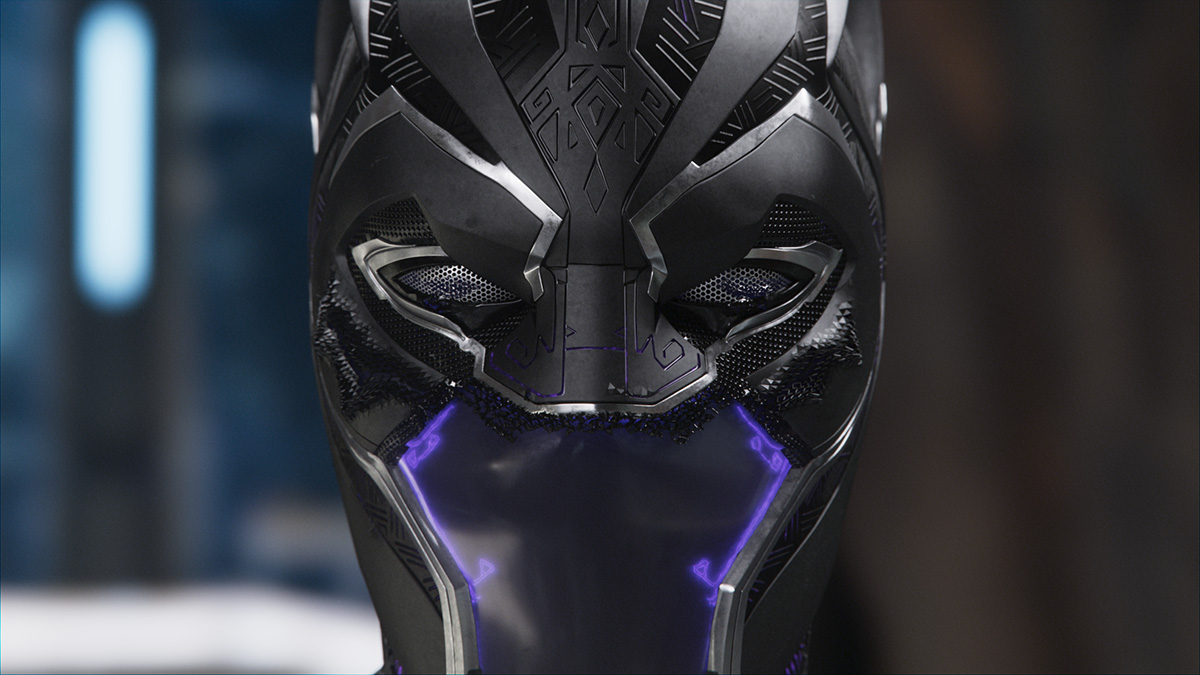With each superhero movie released, visual effects artists seem to find more and more ways to leverage the power of Houdini to deliver original imagery. That might be via destruction, weapons effects, character-related simulations or vegetation. In the case of Ryan Coogler’s Black Panther, Houdini was used for all of those things - and more.
One of the most innovative uses was for the signature cymatic effects prevalent in the world of the Wakanda nation seen in the film. Here, its inhabitants have harvested the sound vibration powers of vibranium contained in an asteroid that once landed there. Method Studios employed Houdini to develop cymatic shapes in various elements of Wakandian life and warfare.
Key members of Method’s FX team weigh in on how the cymatic shapes were realised, and how Houdini formed the backbone of that work.
Going Cymatic
Cymatics relates to the study of visible sound and visible vibrations. The most well-known manifestation is when someone places sand or powder on top of a highly reverberating speaker - the sound waves result in visible vibrating patterns in the material, almost kaleidoscopic in nature. That was a look determined to be imbued into different aspects of Wakandian life, owing to the vibranium being mined there.
Cymatics relates to the study of visible sound and visible vibrations — for example, when someone places sand or powder on top of a highly reverberating speaker the sound waves result in visible vibrating patterns in the material, almost kaleidoscopic in nature.
Method Studios, which produced the work under visual effects supervisor Andy Brown and associate visual effects supervisor Todd Sheridan Perry, implemented cymatic shape designs in Black Panther’s suit energy interactions, gauntlet blasts from the character Shuri, ring blades for Nakia, Talon Fighter and Dragon Flyer engines, ground energy interaction and even Wakandan glass cracking in the mine as a Dragon Flyer shoots at a character.

To do that, Method’s FX team looked to Houdini, and dug deep to get to the heart of cymatics. “Houdini and its procedural workflow is a dream come true tool for FX tasks like cymatic shapes creation,” outlines FX lead Maciej Benczarski. “There are multiple publications regarding beauty and science behind cymatics, but we couldn't find any providing an out-of-a-box solution on how to actually create them with a math formula.”
Houdini and its procedural workflow is a dream come true tool for FX tasks like cymatic shapes creation.
— Maciej Benczarski, FX lead, Method StudiosLooking for away to generate cymatics in Houdini, Method Studios turned to FX artist Ryan Coster, who had already demonstrated his effects sims on other Marvel films including Avengers: Age of Ultron, Captain America: Civil War and Doctor Strange. “Having Ryan in the FX lookdev team made this extremely hard task not only possible, but enjoyable,” says Benczarski. “Ryan's ideas on how to approach it from a more artistic point of view using tools already provided by Houdini saved the day, and made it to all of the effects involving cymatic patterns in Black Panther.”

Pattern-making
The interior of Shuri's gauntlet blasters was one area of effects where cymatics made a very clear appearance. Since real-life cymatics generated by sound are constantly changing shapes - almost like they are alive - this was something Method Studios wanted to replicate in the blasters. Says Benczarski: “We see them changing shapes very rapidly, almost every frame looking completely different, but at the same time they feel like they are influenced by the same force, that they are somewhat connected. This is exactly how sound influences air and this is what we wanted to re-create for the gauntlets.”
In Houdini, Coster ultimately produced an HDA of those kinds of shapes which could evolve or smoothly change their form. Combined with CHOP-controlled offset values, this gave Method Studios rapidly-changing cymatic shapes that still looked like they were from the same ‘family’. “The common shapes showed up each 3 to 4 frames to get a feeling of smooth evolution regardless rapid shape changes,” explains Benczarski.

To get there, Coster first explored the idea of using a mathematical resource for generating true cymatics. But he couldn’t find one. So instead he and the team took a different approach. They kicked off waves on a surface, and where the negative and positive waves collided, they hoped to find naturally-forming cymatics.
To get better control and to prepare for the option of adding user defined shapes or text into the setup, we switched over to a distance-based approach. We would basically plot points on a grid, then for each primitive on the grid, find the average distance to the points around it.
“Unfortunately this didn't give us a lot of control, and only some values would yield anything that looked cool,” details Coster. “To get better control and to prepare for the option of adding user defined shapes or text into the setup, we switched over to a distance-based approach. We would basically plot points on a grid, then for each primitive on the grid, find the average distance to the points around it. This value would get re-mapped until it formed a cool shape. Because it only relied on a point cloud as input, we could animate these incoming points or re-scatter them, to create shape-shifting or totally new patterns. Then by adding another dimension and sampling in volume space we transitioned the effect into 3D.”

Exploring Options
One of the benefits of using Houdini for the cymatics shapes in Method Studio’s visual effects was that the procedural nature of software could be used to quickly turn around options. The look was constantly explored as production went on. For example, the original cymatics system was intended for ground interaction with the ship's propulsion system and as a weapon blast. “For the ground patterns we would project down a shape-shifting cymatic and use its density to fade off a random jitter on the surface,” says Coster. “The grains of sand would then naturally bounce around into the shape of the cymatic.”

The cymatic patterns for the weapon blasts required a slightly different approach. Here, the team tried stacking the cymatic shapes, but found that this did not look very appealing from a side angle. “That's when we started to use the cymatics in 3D with a fresnel-type shader to help read the dimensionality better,” says Coster. “We did lots of other tests using the cymatics as forces for a vibranium waterfall, refresh rates on the vibranium digital screens, and forces for the energy absorption on the suit.”
The use of Houdini and effects simulations in Vancouver has grown rapidly — production on Black Panther itself started with just five FX artists and ballooned up to around 30 to get the work done.
Houdini in the Workflow
Much of Method Studios’ cymatics work and other Houdini effects for Black Panther were handled out of the company’s Vancouver office, with some extra shots dealt with in the New York facility. Benczarski notes that the use of Houdini and effects simulations in general in Vancouver has grown rapidly - production on Black Panther itself started with just five FX artists and ballooned up to around 30 to get the work done.

Houdini reminds me of this magical castle. It’s where each room opens new opportunities for you, and you can't wait to see what's behind the next door.
“Houdini reminds me of this magical castle,” says Benczarski, reflecting on the FX for the film. “It’s where each room opens new opportunities for you, and you can't wait to see what's behind the next door. This is how I have always felt about it ever since I realized how powerful this software is. Even though most of the effects are possible to create in other packages like 3Ds Max or Maya, Houdini's greatest power comes not from ‘what’ kind of effects we can create, but ‘how we can control them,’ and, most importantly ‘how we can update them.’”
COMMENTS
Andr1 6 years, 6 months ago |
It would be great if you could show what you are talking about.
At least some gif.
JohnDraisey 6 years, 6 months ago |
Yeah, some GIFs of the cymatic patterns in action in the Houdini viewport would be awesome.
Pathshaper 6 years, 6 months ago |
It would be even better if people learned to google things for themselves, also it's Wakandan, not Wakandian.
Please log in to leave a comment.